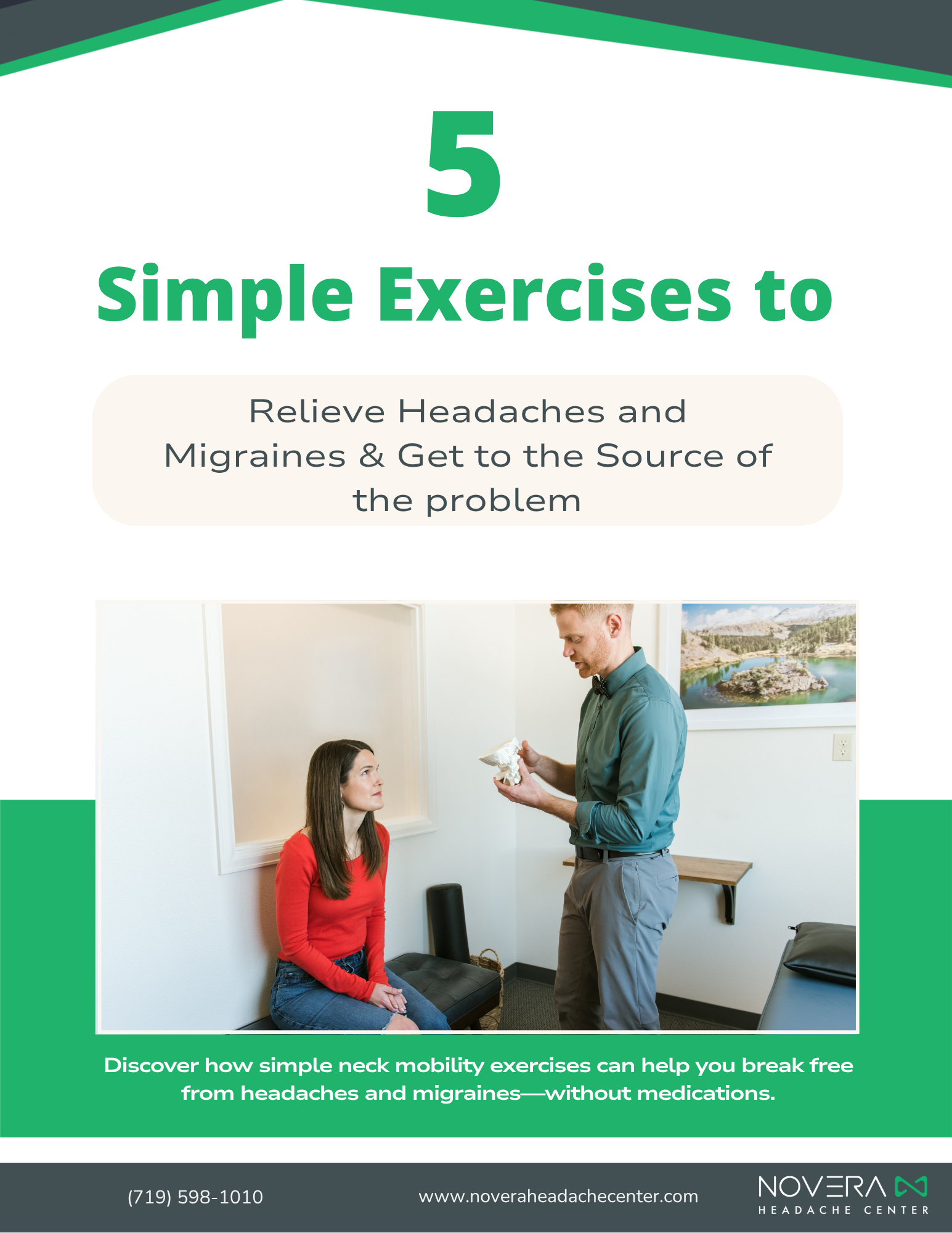Headaches and migraines affect millions of people, yet the reasons behind them often remain unclear. While some individuals experience sharp, one-sided pain, others may deal with dizziness, vision changes, or even symptoms that mimic a stroke. Because headaches can appear in so many different ways and be triggered by countless factors, finding a lasting solution can feel complicated and frustrating.
At Novera: Headache Center, Dr. Taves developed the Three Spoke Framework — a practical, research-driven model that helps identify what is really happening inside the body when headaches and migraines occur. This approach goes beyond quick fixes or symptom management to uncover the true source of pain and guide patients toward long-term relief.
Why a Framework Is Needed
Many people who come to Novera have already tried everything — medications, dietary adjustments, supplements, or alternative therapies — but still struggle with recurring pain. The traditional healthcare system excels at diagnosing serious conditions like tumors or neurological diseases. However, for those who have persistent headaches and migraines without clear findings, the underlying cause is often left unexplored.
Dr. Taves created the Three Spoke Framework to fill that gap. It focuses on finding the root of the problem rather than relying on ongoing medication. Through years of patient care and collaboration with other healthcare professionals, he found that nearly every headache or migraine case can be understood through three main categories:
-
Mechanical causes
-
Developmental factors
-
Systemic influences
Together, these three components offer a complete picture of how the body develops, compensates, and maintains pain over time.
Spoke 1: Mechanical Causes — Neck, Jaw, and Shoulders
The first category examines the physical structures that can send pain signals into the head. The neck, jaw, and shoulders are the most common sources. When these areas are tense or misaligned, they can irritate nerves and muscles that refer pain upward.
Musculoskeletal dysfunctions — such as tight shoulder muscles, jaw clenching, or limited neck movement — are often overlooked as migraine triggers. Many patients initially dismiss these possibilities until an assessment reveals the connection. Once tension or movement restrictions in these areas are addressed, headaches often become less frequent and less intense.
Spoke 2: Developmental Factors — How the Body Formed and Functions
The second spoke focuses on how a person’s body has developed and how it functions over time. Factors such as airway size, posture, dental structure, or past injuries can all contribute to chronic strain on the neck and shoulders.
Modern lifestyles compound these issues. Sitting for long hours, poor posture, and limited movement add ongoing pressure to the upper spine. Even small, repetitive stresses — like looking down at a phone or carrying children — can lead to lasting muscle tension.
Airway development plays a major role as well. Breathing patterns, jaw alignment, and dental history often reveal whether a person’s airway has fully developed. Mouth breathing during sleep or restricted nasal breathing can force the head and jaw into positions that strain neck muscles and reduce sleep quality. Addressing these developmental factors helps restore balance and allows the body to move and function properly again.
Spoke 3: Systemic Influences — Whole-Body Health and Pain Threshold
The third spoke looks at body-wide influences that affect how sensitive a person is to pain. Hormones, gut health, inflammation, stress, and poor sleep can all lower the body’s ability to tolerate discomfort.
Many people assume their migraines are caused directly by hormones or certain foods, but these are typically triggers, not the root cause. Systemic factors change how easily pain signals reach the brain rather than creating new pain themselves. For instance, when inflammation rises, the body becomes more aware of existing tension in the neck or jaw.
This explains why someone might feel temporary relief from dietary or lifestyle changes, only for headaches to return later. Without addressing the mechanical and developmental aspects of the problem, the underlying source of pain remains.
Applying the Three Spoke Framework
By evaluating all three spokes — mechanical, developmental, and systemic — clinicians can identify where a headache originates and how to correct it. The framework guides patients toward long-term recovery using movement-based, natural methods rather than relying solely on medication.
At Novera: Headache Center, this process has proven effective across nearly every type of headache and migraine. The approach helps patients rebuild proper movement, improve breathing, and restore overall balance to the body.
If you’re ready to address the true cause of your pain, book an appointment to start your journey toward lasting relief.
The Takeaway
The Three Spoke Framework empowers patients to understand their headaches and take control of their healing. By addressing the true causes — rather than masking symptoms — it is possible to achieve lasting relief and reduce dependence on medication.
For individuals struggling with chronic headaches or migraines, learning how these three categories interact may be the first step toward genuine, long-term freedom from pain.




